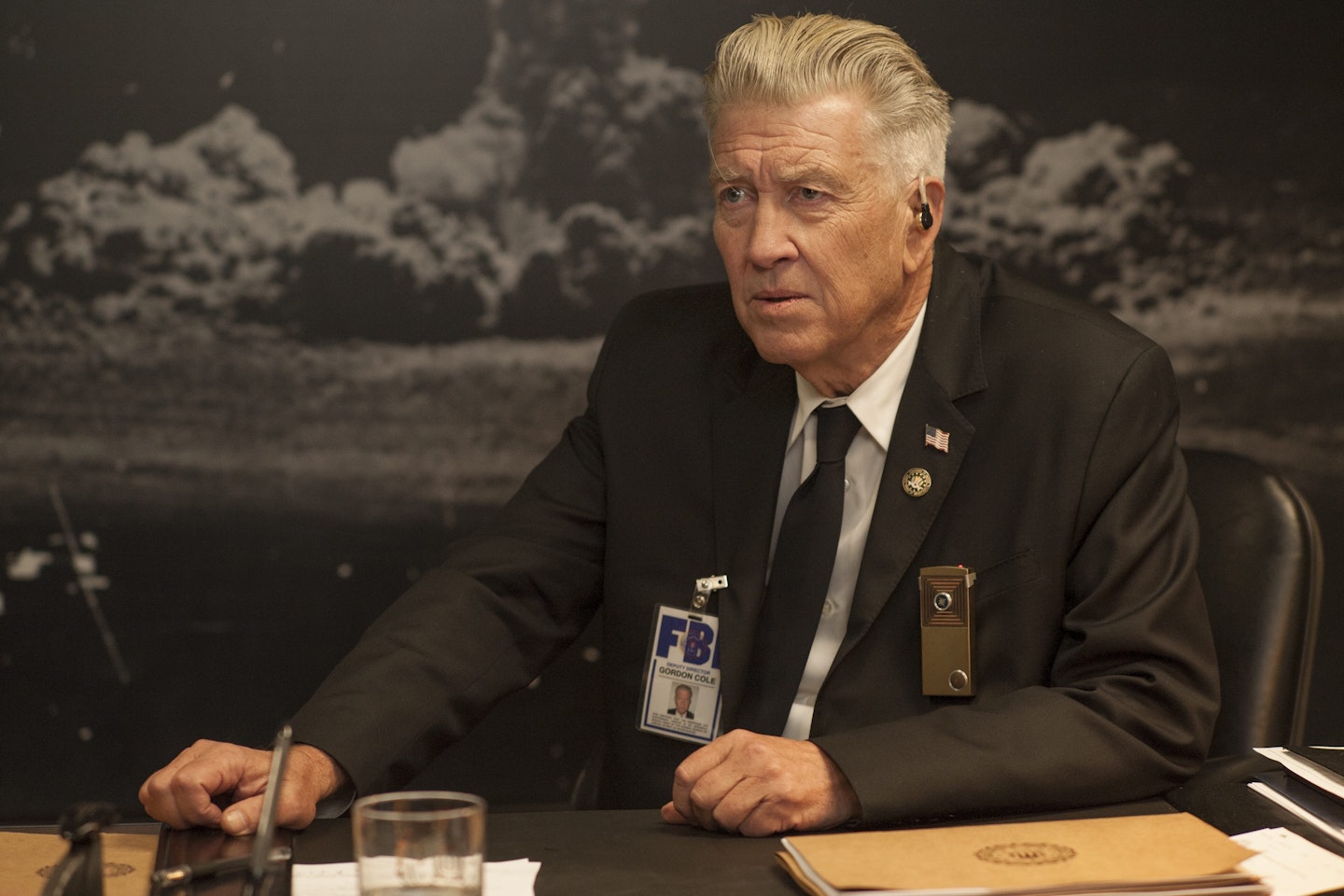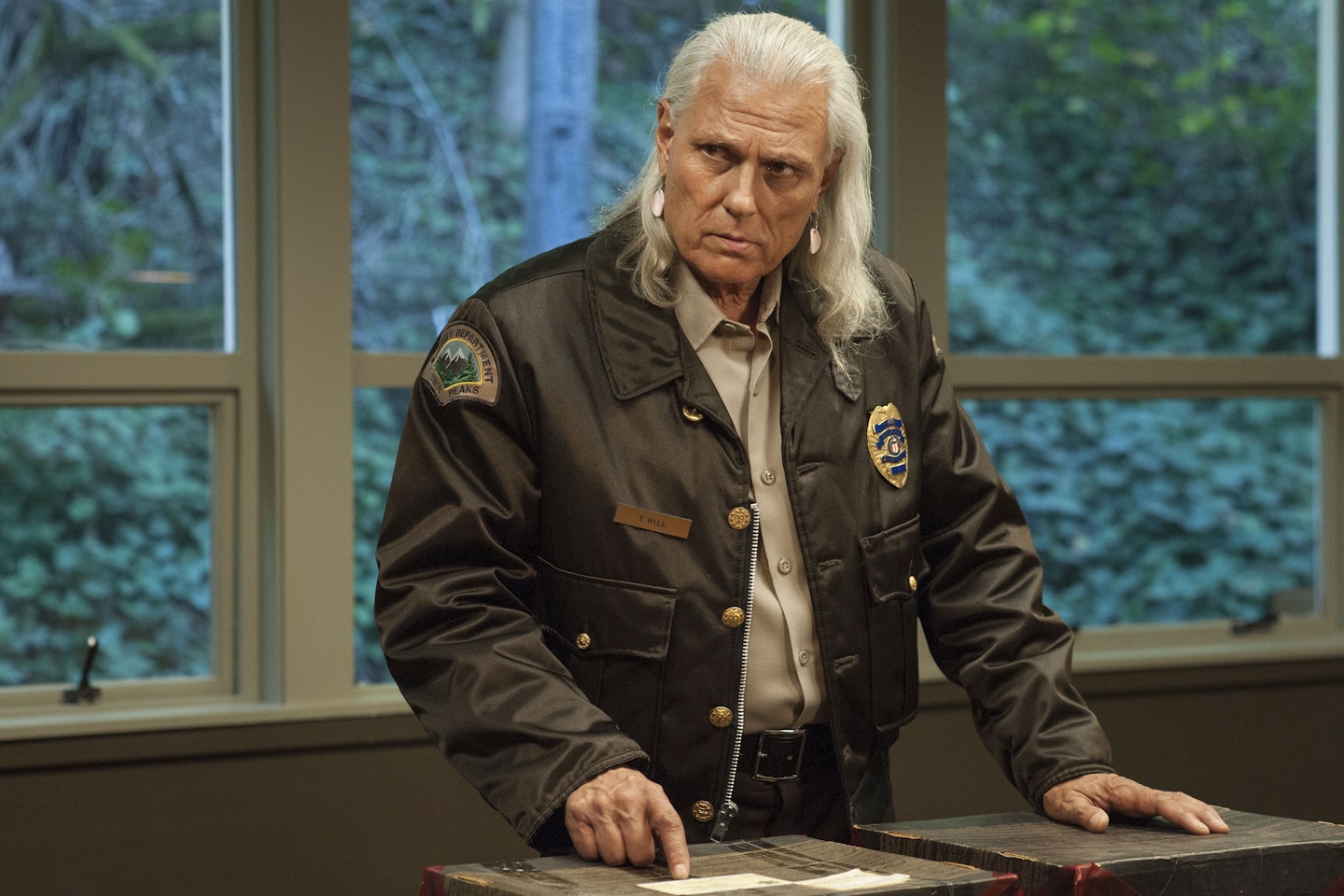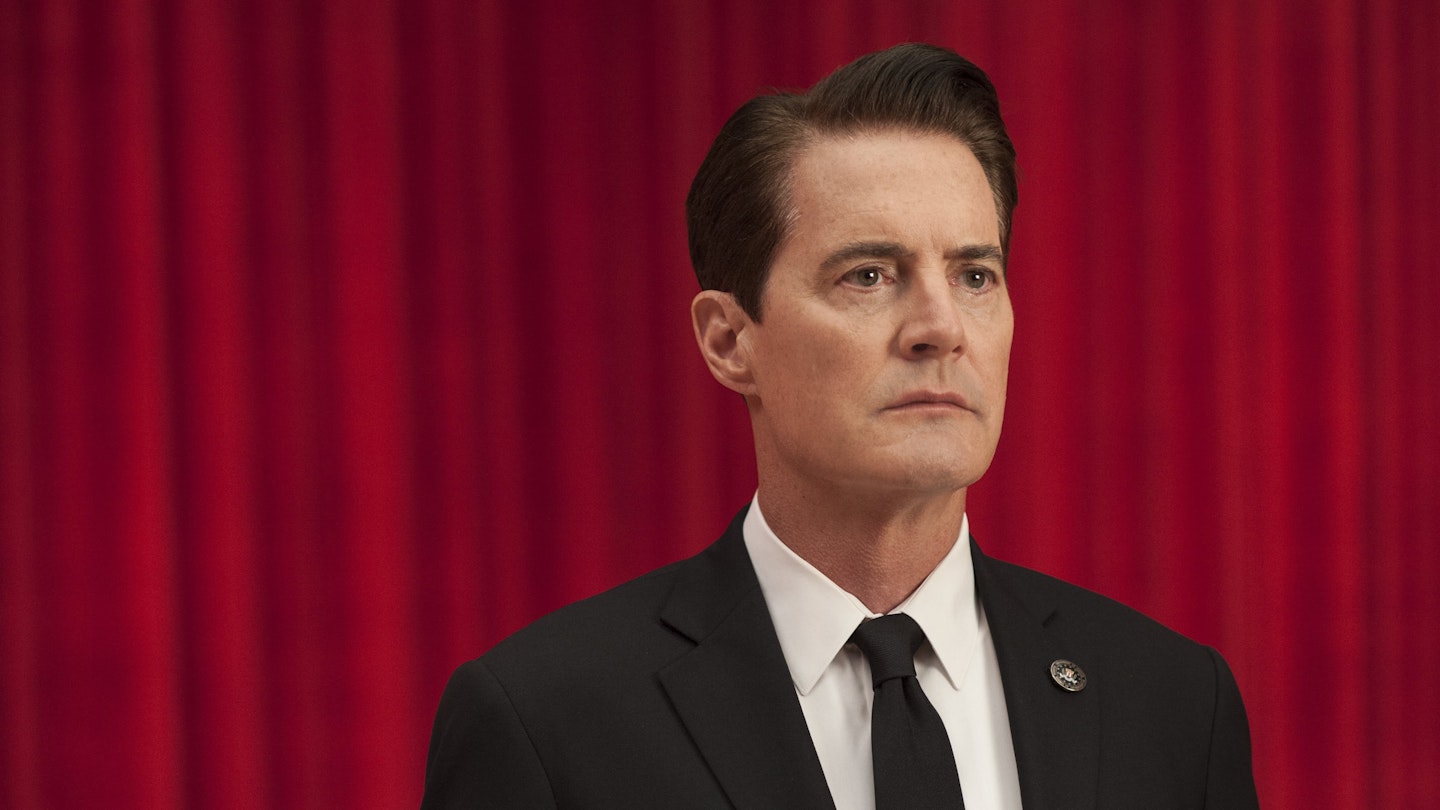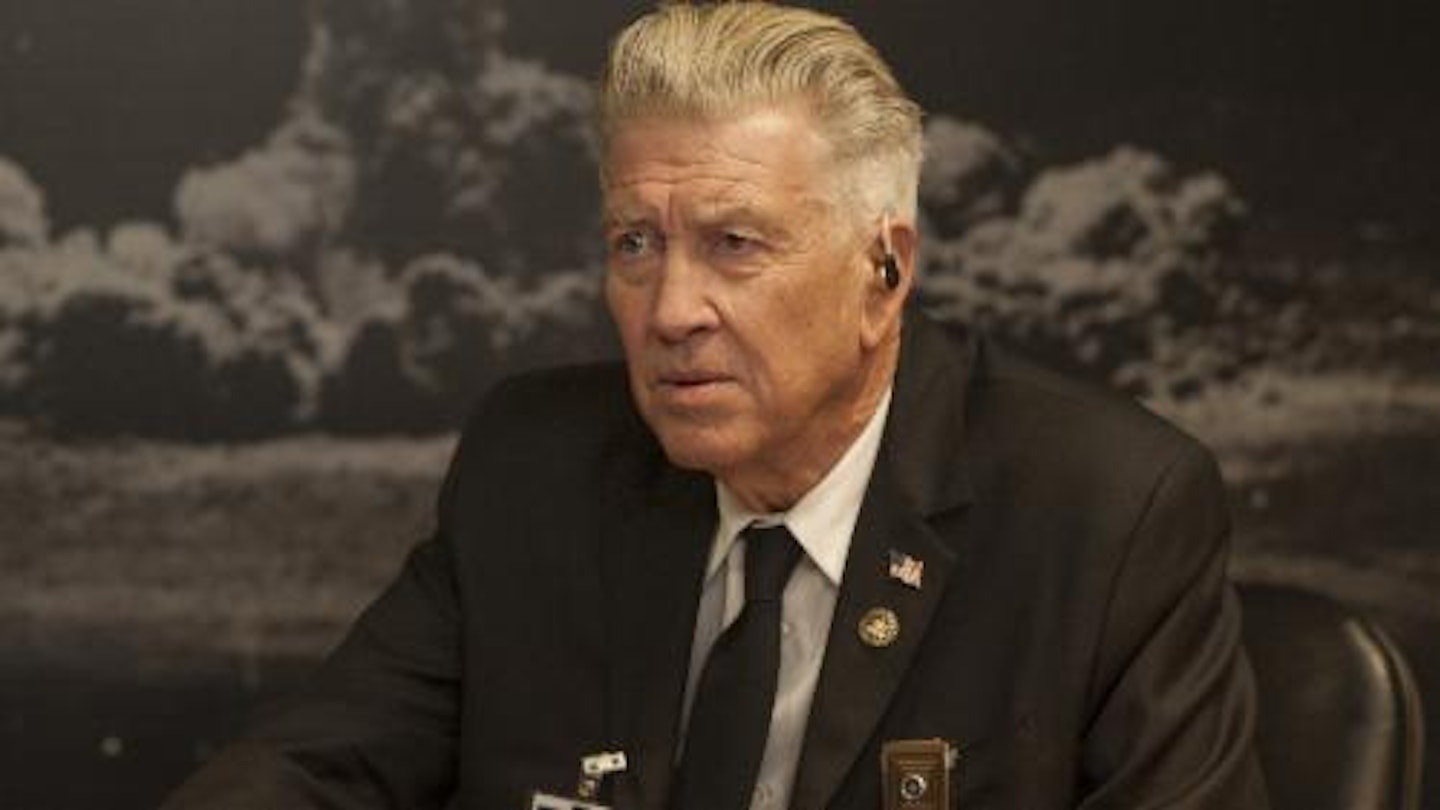Well, that was emotional. These events are going to have to percolate a bit. Like… damn, what is that hot drink that percolates?
Twin Peaks itself has been percolating since 1992’s Fire Walk With Me — in our minds, in David Lynch and Mark Frost’s brains, and in pop culture at large, quietly waiting to take hold again. The feature prequel aside, when we last left the Red Room, some semblance of Laura Palmer (Sheryl Lee) told Agent Cooper (Kyle MacLachlan) she’d see him in 25 years, then screamed like a banshee, and poor Coop became possessed, possibly, by Bob, squeezed out a load of toothpaste and headbutted a mirror. That finale, directed by Lynch, was more terrifying than a sackful of jump scares — an ending that laughed demonically in the face of closure. In the dying moments of the series, it triggered a new nightmare, leaving us hungry for a continuation we never thought we’d get. So here we are, and Lynch isn’t taking any prisoners, all but warning us: be careful what you wish for.

Everything is broken. There is so much pain here. Coop, as we found him, was still stuck in the Red Room, which now more than ever seems like Hell itself, as he was visited by some deeply troubled ghosts of the past. Away from the Black Lodge things were hardly lighter, as we visited South Dakota, New York City and Las Vegas. Yes, there was slapstick and farce, absurdist humour offsetting the violence, but what violence it was: evil Coop’s killing spree was one thing, but elsewhere, Lynch outdid himself. A ghoulish massacre was traumatic, while the aftermath of a mutilation was a world away from Laura Palmer’s beautiful corpse — this was Manson Family bad. Oh, did you think this would be a comforting nostalgia-fest? Did you think you’d get to hang out with Coop and Bobby and Audrey and feel like it was 1990 again? Did you think Lynch would give you an easy ride?
By the end, disparate strands didn’t make sense necessarily, but they came together, building to a bizarre and upsetting climax. But the beauty of Twin Peaks is that even when it doesn’t make sense at all, it feels right. “Are you Laura Palmer?” asked Coop of Laura Palmer. “I feel I know her,” she said, just as she had in the Red Room all those years ago, “but sometimes my arms bend back.”
Lynch says that regardless of the delivery system, the new Twin Peaks is very much a movie, just in 18 parts. His film career itself might have fallen by the wayside, but you get the sense that back here on the small screen, he’s doing everything he’s ever wanted.
Whereas the original show was stifled by other creative commitments, plot pressures from the network and declining ratings, Lynch and Frost have had nothing in their way this time. We are now watching Lynch unleashed, untampered with, free to do exactly as he wished, and is having the time of his life. It is beautiful to see him so unstifled, so prepared, and so in control. Lynch and Frost wrote this over three years, filmed it over six months, and it’s come to us fully-formed, slaved over to the last, no stone unturned. Did you see the sole sound design credit? Lynch. Are there subliminal frequencies on this soundtrack specifically designed to unsettle us? You wouldn’t bet against it.
Twin Peaks was always about how it feels. And as funny and as shocking as this opener was, what we are really left with is sadness, much of it stemming from time itself — past lives, present realities, age, death. Look at the damage in Laura’s eyes. Decades of pain. And here, when Coop is asked, “Is it future or is it past?”, Lynch might well be asking us what we want. What happens when we go back? What damage have we seen? What have we lost?
Lynch unleashed, untampered with, free to do exactly as he wished
This is also given to us literally. Lynch could easily have made Catherine Coulson look more like The Log Lady did when we last saw her. Coulson died in September 2015, at 71, of cancer, and it’s heartbreaking to see her now, presumably near the end of her life, practically bald and with nose tubes, looking like she’s just hanging on. There is no faking anything here, and it’s confronting. “The stars turn and a time presents itself,” she says.
In The Bang Bang Bar, old friends return while a young band play. Yes, there is nostalgia at play, but positioned here, after everything we’ve just seen, it’s subverted, an affecting alchemy of love, longing and loss. Presented with the past, you reflect on both the last two hours and the last 25 years, and you want to weep. What are we supposed to do now?

Big Questions
Who’s pulling the strings?
That kid who’s been employed to watch the glass box for some billionaire. Who is it? Is it the same person we hear about in Vegas when Roger says, “You better hope you never have someone like him in your life?” Given those glass box shenanigans, the Red Room seems to have even more real-world power than we’d thought.
What the hell is that tree?
Yes, the naked electric tree that’s topped with a cross between a putty brain and Eraserhead’s baby. “He must come back in before you can go out,” it tells Coop, before it has some sort of demonic seizure and the Red Room turns into a horrific theme park version of itself. Either way we’d like more tree, please.
Did Bill Hastings kill Ruth Davenport?
He wasn’t there, he insists – but he did dream it. Yet his fingerprints were all over her room. Evil Coop certainly seems to be involved. With this new murder case to be investigated, it seems Bob is back big-time. Even if he has made Cooper look like Tommy Wiseau.
Twin Peaks is broadcast weekly on Sky Atlantic and NOWTV, in a simulcast with the US airing on Showtime. The Premiere is now available on demand along with Parts 3 & 4 via Sky, Sky Go and NOWTV. Catch up now on series 1 and 2 via Sky Box Sets.

